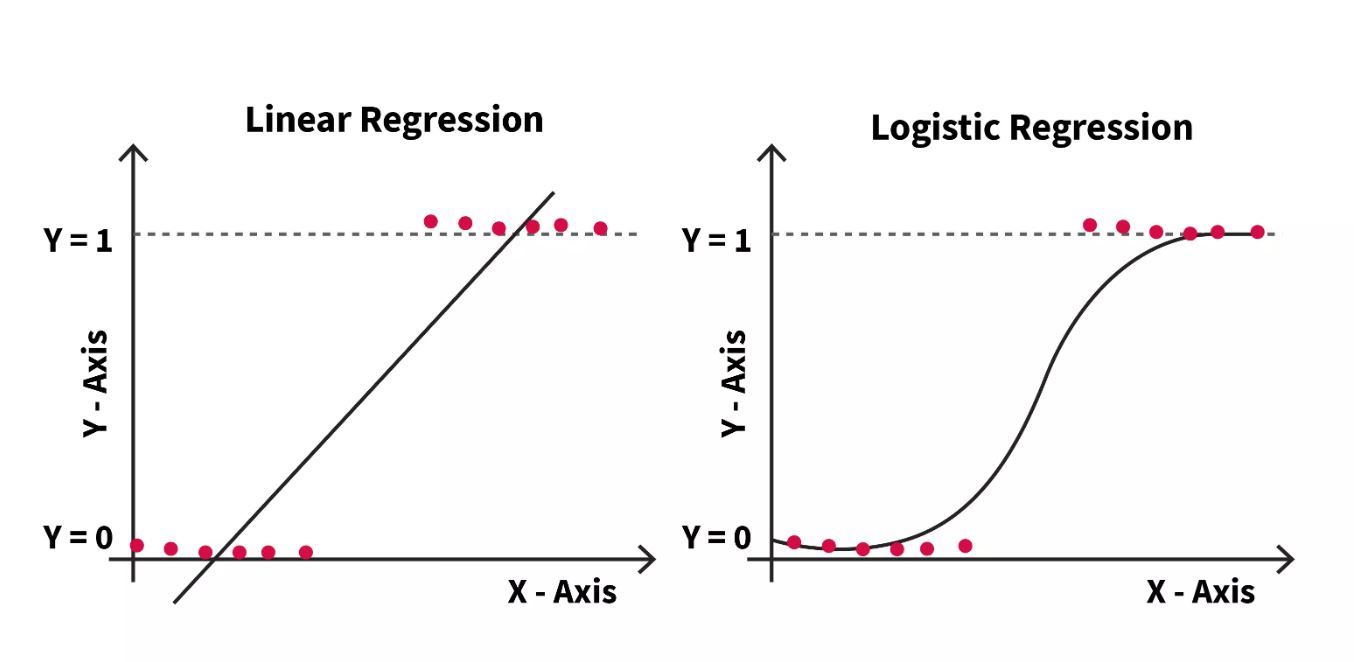
Machine Learning Algorithms (A quick revision)
there is only 4 algorithms :
Linear Regression
Logistic Regression
Decision Tree
Random Forest
Steps for Machine Learning Algorithms
-
Define the Problem: Identify the task and the kind of data needed to address it (e.g., classification, regression).
-
Collect Data: Gather relevant data for your algorithm to learn from.
-
Preprocess Data: Clean, normalize, or encode data to prepare it for analysis.
-
Split the Data: Divide data into training, validation, and testing datasets.
-
Select an Algorithm: Choose an appropriate model (e.g., decision trees, neural networks).
-
Train the Model: Use training data to let the algorithm learn patterns.
-
Validate the Model: Use the validation set to fine-tune and improve performance.
Prediction and Evaluation steps is necessary model accuracy. -
Test the Model: Evaluate how well the algorithm performs on new, unseen data.
-
Deploy the Model: Implement it in a real-world environment if it meets accuracy criteria.
-
Monitor & Update: Regularly monitor performance and update the model if needed.
Now we are talking about the algorithms in machine learning.
Linear Regression
- It predicts real values (or) Predicting output variable is "continuous data".
- A relationship is established between the independent variable and the dependent variable by fitting a best fit line.
- Assuming the relation between x & y is "linear" (or) The best fit line is known as the "regression line".
Representation:
y = mx + c
Where:
- y = dependent variable
- m = slope
- x = independent variable
- c = intercept
Y = β0 + β1X1 + β2X2 + ... + βpXp
Where:
- Y: The response variable.
- Xj: The jth predictor variable.
- βj: The average effect on Y of a one-unit increase in Xj, holding all other predictors fixed.
Logistic Regression
- It is a classification algorithm used to estimate "Discrete Data values" based on a given set of independent variables.
- Its output value lies between [0 and 1] or [yes/no].
- Uses the Sigmoid function probability:
- Whereas logistic regression is used to calculate the probability of an event. For example, classify if tissue is benign or malignant.
- Logistic regression assumes the binomial distribution of the dependent variable.
e^y/(1+e^y)
p(X) = e^(β0 + β1X1 + β2X2 + ... + βpXp) / (1 + e^(β0 + β1X1 + β2X2 + ... + βpXp))
Decision Tree
- It is a Supervised learning algorithm used for classification problems.
- Works with both categorical and continuous dependent variables.
- In this algorithm, the "population is split" into two (or) more homogeneous sets based on conditions.
Different Techniques:
- Gini impurity
- Information Gain
- Chi-square
Code (if need)
from sklearn.tree import DecisionTreeClassifier
# Create a decision tree classifier
dt = DecisionTreeClassifier(criterion='entropy', random_state=42)
# Fit the model
dt.fit(X_train, Y_train)
# Predict on the test set
dt_pred = dt.predict(X_test)
Pros:
- Interpretability: Easy to visualize and understand.
- Speed: Quick to train and make predictions.
Cons:
- Overfitting: Prone to overfitting, especially with deep trees.
- Sensitivity to Outliers: Can be heavily influenced by outliers.
Random Forest
- A collection of Decision Trees is called a "Random Forest".
- To classify a new object based on its attributes:
- Each tree in the forest provides a classification.
- The majority of votes determines the final class (this is known as the Bagging Technique).
- Applicable for both Classification and Regression tasks.

Code (if need)
from sklearn.ensemble import RandomForestClassifier
# Create a random forest classifier
rf = RandomForestClassifier(n_estimators=100, random_state=42)
# Fit the model
rf.fit(X_train, Y_train)
# Predict on the test set
rf_pred = rf.predict(X_test)
Pros:
- Accuracy: Generally more accurate than a single decision tree.
- Robustness: Less sensitive to outliers and noise.
- Overfitting: Less prone to overfitting due to ensemble averaging.
Cons:
- Interpretability: Difficult to interpret and visualize.
- Computation: Requires more computational resources and time to train.
Thanks for Reading ~ Jai hanuman
2 Reactions
1 Bookmarks

